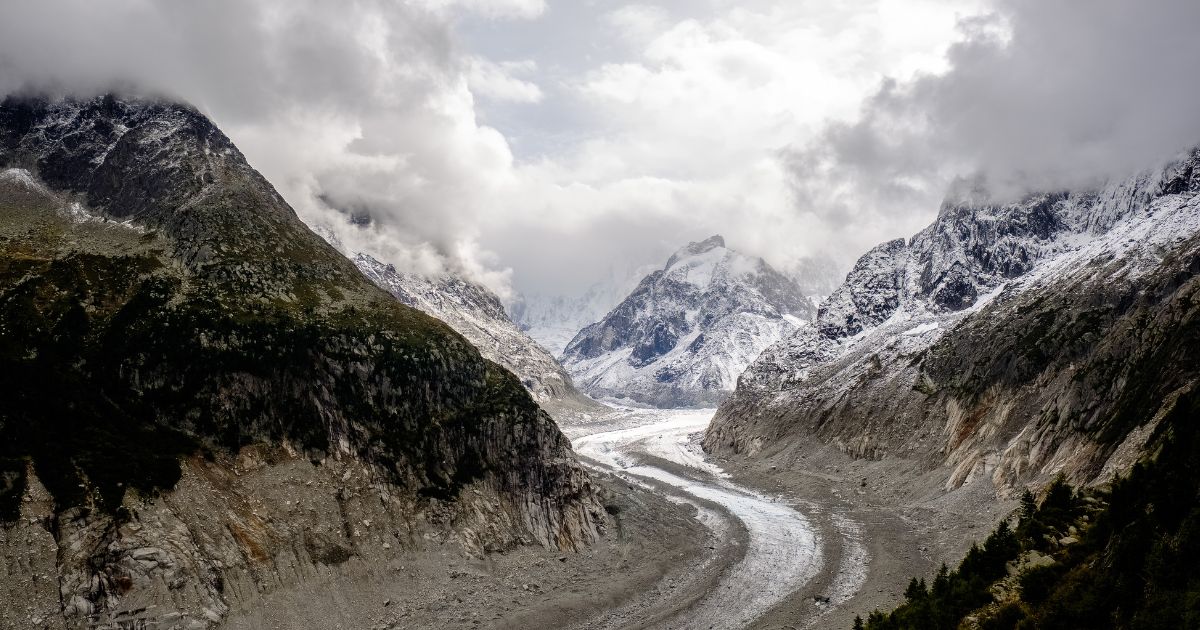
Climate Change and its Impacts: A Report on the Sustainable Development Goals (SDGs)

Introduction
With global temperatures continuing to rise unabated, the impacts of climate change are becoming more frequent, more intense, more dangerous, and more widespread. Sea levels are rising, glaciers are melting, temperatures are increasing, and extreme weather events are becoming increasingly commonplace. However, despite the uptick in anxiety about the future of the planet, we do know what to do — there are plenty of science-backed steps to mitigate the worst impacts of climate change.
Understanding Climate Change
At the most basic level, climate change is when the earth’s climate system undergoes a significant adjustment and exhibits new weather patterns. Changes in climate can be as “brief” as a few decades or as long-lasting as millions of years. There’s a difference between weather patterns and climate change. Temperatures fluctuate organically over the course of the Earth’s life. But the amount of climate change we’re seeing now is largely the result of human activity — specifically, human activity that produces greenhouse gases, most notably carbon dioxide (CO2), methane (NH4), and nitrous oxide (NO2).
Why is Climate Change Happening?
Though some climate change is normal, the extreme changes we’ve seen over the last several decades are primarily the result of human activity. The biggest drivers of this change are greenhouse gases, which are released into the environment as the result of various everyday human activities.
What Does Climate Change Look Like?
There is a wealth of evidence showing the consequences of anthropogenic climate change, and according to countless studies by climate scientists, we need to take urgent action to reverse these effects in order to avoid making the planet far less hospitable to humans. Here are some of those effects, many of which feed back into and influence one another.
Rising Temperatures
Rising temperatures are a central component of global warming. Scientists have been tracking global temperatures since 1850, and the last 10 years were the 10 hottest years on record, with 2023 itself being the hottest year on record. Worse, 2024 seems to have a one-in-three chance of being even hotter than 2023. In addition to higher temperatures, climate change has also increased the severity, frequency, and length of deadly heat waves around the globe.
Hotter Oceans
The ocean absorbs much of the heat caused by greenhouse gases, but that can also make the ocean hotter as well. The temperature of the ocean, much like the temperature of the air, was hotter in 2023 than any other year, and it’s estimated that the ocean has absorbed over 90 percent of the Earth’s warming since 1971.
Less Snow Cover
Snow plays an important role in regulating Earth’s temperatures due to the albedo effect — that is, the fact that light-colored surfaces reflect the sun’s rays rather than absorbing them. This makes snow a cooling agent, and yet climate change has caused significant decreases in snow cover around the world.
Shrinking Ice Sheets and Glaciers
Ice sheets contain vast amounts of frozen fresh water, and they cover so much surface area that they influence global weather patterns. But for decades, the world’s ice sheets have been shrinking. The surface area of the Greenland ice sheet — the biggest in the world — has decreased by around 11,000 square miles in the last three decades, and it lost 270 billion metric tons of mass every year, on average, between 2002 and 2023.
Rising Sea Levels
Climate change causes sea levels to rise in two ways. First, as ice sheets and glaciers melt, they pour extra water into the oceans. Secondly, higher temperatures cause ocean water to expand. Since 1880, sea levels have already risen by about 8-9 inches, and they won’t stop there. Ocean levels are currently rising at a rate of 3.3 millimeters per year, and scientists predict that between 2020 and 2050, they’ll increase by an additional 10-12 inches.
Ocean Acidification
When oceans absorb atmospheric carbon dioxide, they become more acidic. Acidified ocean water inhibits calcification, a process that animals such as snails, oysters, and crabs rely on to build their shells and skeletons. The world’s oceans have become about 30 percent more acidic over the last two centuries, and as a result, some animals are essentially dissolving in the water as low pH causes shells and skeletons to dissolve.
Extreme Weather Events
In the last 50 years, the number of weather-related disasters has increased fivefold, due in no small part to climate change. California has experienced a series of wildfires in recent years; the 2018 wildfires burned more land in the state than any other fire since 1889, and the 2020 fires burned even more land than that. In 2020, an unprecedented plague of locusts descended upon East Africa and the Middle East, devouring crops and threatening the region’s food supply. In the Bay of Bengal, super-cyclone Amphan killed hundreds of people and caused widespread flooding in 2020. Heat waves are also becoming increasingly common; in 2022, people died of heat-related deaths at the highest rate in over two decades.
The Solution to Climate Change
While there’s no single solution for tackling anthropogenic climate change, climate scientists have recommended a wide range of policies and social changes that, if implemented, would help reverse the worst effects. Some of these recommendations take place at the individual level, while others require large-scale or government action.
- Investing in green alternatives to fossil fuels.
- Rewilding.
- Reducing our consumption of meat and dairy.
Current Efforts to Solve Climate Change
In 2016, 195 countries and the European Union signed the Paris Climate Accords, the first legally-binding international treaty on climate change. The goal of the accords is to limit global temperature increase to “well below” 2°C above pre-industrial levels by 2100 — though it encourages countries to aim for the more ambitious limit of 1.5°C above pre-industrial levels — and each signatory is required to develop and present its own plan for reducing emissions within its borders.
The Bottom Line
It is clear that wide-scale systemic change is needed to address the human-made causes of climate change. Everyone has a role to play
SDGs, Targets, and Indicators
| SDGs | Targets | Indicators |
|---|---|---|
| SDG 13: Climate Action | Target 13.1: Strengthen resilience and adaptive capacity to climate-related hazards and natural disasters | No specific indicators mentioned in the article |
| Target 13.2: Integrate climate change measures into national policies, strategies, and planning | No specific indicators mentioned in the article | |
| Target 13.3: Improve education, awareness-raising, and human and institutional capacity on climate change mitigation, adaptation, impact reduction, and early warning | No specific indicators mentioned in the article | |
| Target 13.a: Implement the commitment undertaken by developed-country parties to the United Nations Framework Convention on Climate Change to a goal of mobilizing jointly $100 billion annually by 2020 from all sources to address the needs of developing countries in the context of meaningful mitigation actions and transparency on implementation and fully operationalize the Green Climate Fund through its capitalization as soon as possible | No specific indicators mentioned in the article | |
| Target 13.b: Promote mechanisms for raising capacity for effective climate change-related planning and management in least developed countries and small island developing States, including focusing on women, youth, and local and marginalized communities | No specific indicators mentioned in the article | |
| SDG 15: Life on Land | Target 15.1: By 2020, ensure the conservation, restoration, and sustainable use of terrestrial and inland freshwater ecosystems and their services, in particular forests, wetlands, mountains, and drylands, in line with obligations under international agreements | No specific indicators mentioned in the article |
| Target 15.2: By 2020, promote the implementation of sustainable management of all types of forests, halt deforestation, restore degraded forests, and substantially increase afforestation and reforestation globally | No specific indicators mentioned in the article | |
| Target 15.5: Take urgent and significant action to reduce the degradation of natural habitats, halt the loss of biodiversity, and protect and prevent the extinction of threatened species | No specific indicators mentioned in the article | |
| Target 15.9: By 2020, integrate ecosystem and biodiversity values into national and local planning, development processes, poverty reduction strategies, and accounts | No specific indicators mentioned in the article |
1. Which SDGs are addressed or connected to the issues highlighted in the article?
SDG 13: Climate Action
The article primarily focuses on climate change and its impacts, making SDG 13 directly relevant to the issues discussed.
SDG 15: Life on Land
The article briefly mentions deforestation and its connection to greenhouse gas emissions, which relates to SDG 15’s targets on sustainable management of forests and halting deforestation.
2. What specific targets under those SDGs can be identified based on the article’s content?
Target 13.1: Strengthen resilience and adaptive capacity to climate-related hazards and natural disasters
The article highlights the increasing frequency and intensity of extreme weather events as a consequence of climate change, indicating the need to strengthen resilience and adaptive capacity.
Target 13.2: Integrate climate change measures into national policies, strategies, and planning
The article emphasizes the importance of integrating climate change measures into national policies and planning to address the impacts of climate change effectively.
Target 13.3: Improve education, awareness-raising, and human and institutional capacity on climate change mitigation, adaptation, impact reduction, and early warning
The article mentions the need for education and awareness-raising on climate change to empower individuals and institutions to contribute to mitigation, adaptation, and impact reduction efforts.
Target 13.a: Implement the commitment undertaken by developed-country parties to the United Nations Framework Convention on Climate Change to a goal of mobilizing jointly $100 billion annually by 2020 from all sources to address the needs of developing countries in the context of meaningful mitigation actions and transparency on implementation and fully operationalize the Green Climate Fund through its capitalization as soon as possible
The article briefly mentions the importance of financial support from developed countries to address the needs of developing countries in climate change mitigation and adaptation.
Target 13.b: Promote mechanisms for raising capacity for effective climate change-related planning and management in least developed countries and small island developing States, including focusing on women, youth, and local and marginalized communities
The article highlights the importance of raising capacity for climate change planning and management, particularly in vulnerable regions and communities.
3. Are there any indicators mentioned or implied in the article that can be used to measure progress towards the identified targets?
No specific indicators are mentioned or implied in the article that can be used to measure progress towards the identified targets.
4. Table: SDGs, Targets, and Indicators
| SDGs | Targets | Indicators |
|---|---|---|
| SDG 13: Climate Action | Target 13.1: Strengthen resilience and adaptive capacity to climate-related hazards and natural disasters | No specific indicators mentioned in the article |
| Target 13.2: Integrate climate change measures into national policies, strategies, and planning | No specific indicators mentioned in the article | |
| Target 13.3: Improve education, awareness-raising, and human and institutional capacity on climate change mitigation, adaptation, impact reduction, and early warning | No specific indicators mentioned in
Copyright: Dive into this article, curated with care by SDG Investors Inc. Our advanced AI technology searches through vast amounts of data to spotlight how we are all moving forward with the Sustainable Development Goals. While we own the rights to this content, we invite you to share it to help spread knowledge and spark action on the SDGs. Fuente: sentientmedia.org
Join us, as fellow seekers of change, on a transformative journey at https://sdgtalks.ai/welcome, where you can become a member and actively contribute to shaping a brighter future.
|







